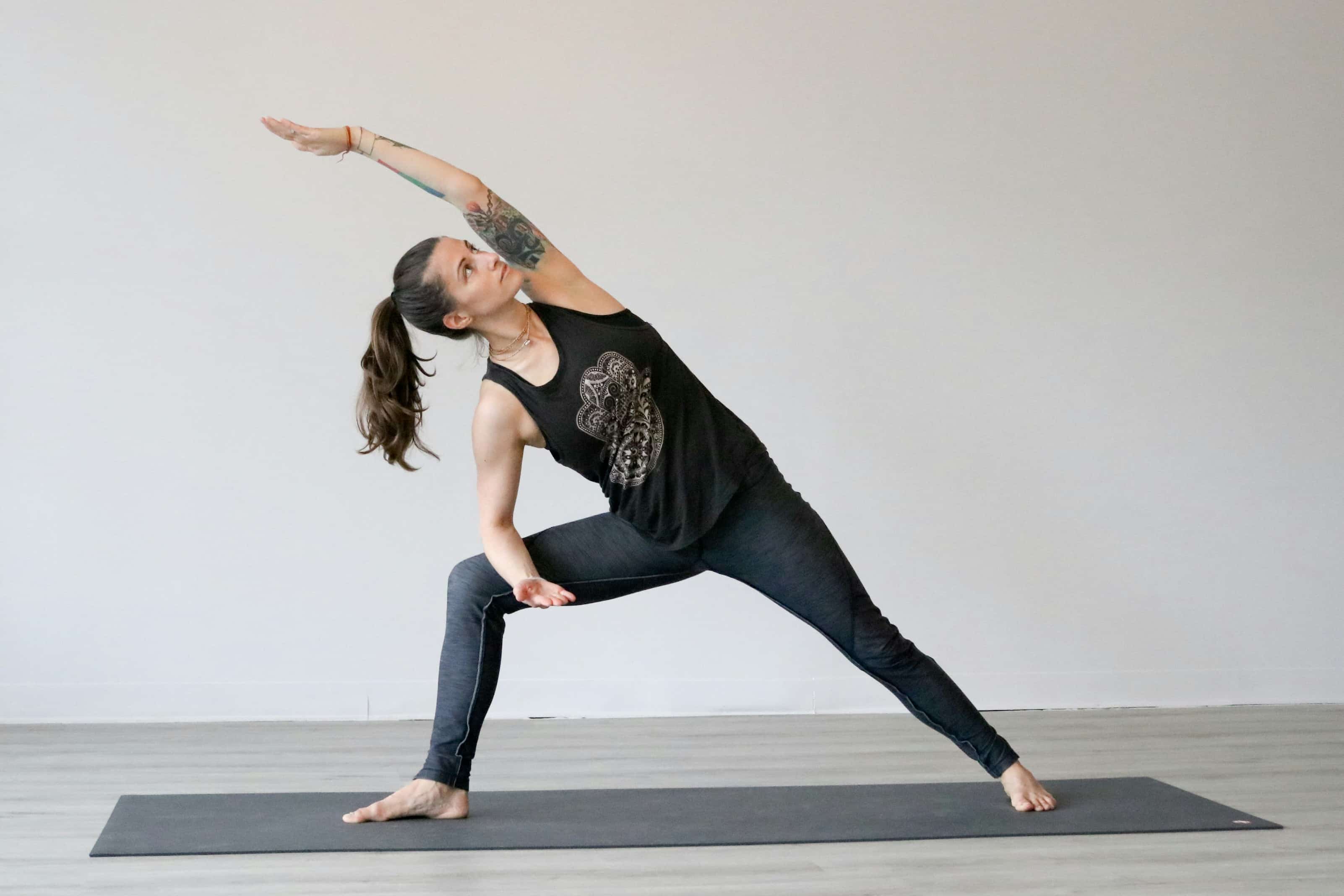Exercise and physical activity are a vital part of a healthy lifestyle. But, how much exercise do you need to reap the benefits for heart health, brain health, stress reduction, metabolism, bone health, and longevity?
The amount of exercise you need to maintain a healthy lifestyle depends on your age, the intensity of the exercise, and whether or not you are pregnant. We break it down in the infographic below for your own health and wellness or to help build your clients’ exercise regimen.


Get Your Free Guide
Learn How to Start a Fulfilling, Impactful Career as a Holistic Health Coach
You’ll learn:
- Why holistic health matters
- If holistic health coaching is right for you
- What career opportunities exist for health coaches
- And more!
What is Moderate-Intensity and Vigorous-Intensity Exercise?
Moderate-intensity physical activity is defined as activity that makes you breathe faster and gets your heart rate up, but you are still able to talk relatively easily.
Some examples of moderate-intensity exercise include:
- Walking or cycling briskly
- Social dancing
- Gardening
- Water aerobics
Vigorous-intensity exercise will require more effort, and you’re more likely to work up a sweat. You won’t be able to talk without feeling out of breath.
Some examples of vigorous-intensity exercise include:
- Tennis
- Running
- Swimming laps
- Aerobic dancing
- Fast cycling
- Jumping rope
- Heavy manual labor
The best way to determine whether you are in your desired intensity zone is by knowing your target heart rate, as it changes based on your age. Moderate exercise gets you in the 50–70% of your maximum heart rate zone, while vigorous-intensity exercise gets you between 70–85% of your maximum heart rate.
How Much Exercise and Physical Activity Do Most People Need to Support a Healthy Lifestyle?
Exercise and physical activity are essential to health and wellbeing and to lower the risk of developing a range of diseases.
For the most part, exercise guidelines for the general population have been unified across countries and organizations. This makes it easier to make recommendations to your clients or as a starting point for designing your own fitness goals across your lifetime.
To gain a complete understanding of exercise guidance, there are four important things to keep in mind:
- Exercise recommendations change depending on a person’s age.
- Recommendations are made based on two factors: time and levels of intensity, which aren’t universally understood, but they have been defined.
- Recommendations are made based on minimum times for the general population within that age category. In other words, it is generally fine if you or a client surpass those exercise goals in time or intensity levels as long as measures are taken to be protected from injury, exhaustion, and dehydration.
- As coaches, it is important to adjust activity types, levels, and times to your clients’ needs.
Exercise Guidelines by Age
Children under 1
Babies should be encouraged to be physically active throughout the day as their bodies grow stronger and are able to move more. Before they are independently mobile, they should be encouraged to be on their bellies (tummy time) for at least 30 minutes throughout the day while they are awake.
Screen time is not recommended for babies and, when they are sedentary, their caregivers should tell them stories, speak to them, and encourage them to explore age-appropriate toys.
Children Between 1 and 5
Toddlers and young children should be physically active for at least 3 hours (180 minutes) per day, but more is better.
Active play should be encouraged, including climbing, riding bikes, playing in the water, and chasing or ball games.
It is recommended that children under 2 do not engage in sedentary screen time, and that it be limited for children 2 to 5.
Children and Teenagers
Children and teenagers from 5 to 18 should be getting at least 60 minutes of moderate- to vigorous-intensity physical activity every day, with a focus on aerobic activities or activities that increase their heart rate.
It is recommended that children and adolescents carry out a variety of activities to develop movement skills and to strengthen muscles and bones as they grow.
Children and teenagers should limit the amount of time they are sedentary, including the amount of time they are watching TV or on the phone and computer.
Adults
Adults aged 18 to 64 should do at least 150 minutes of moderate-intensity aerobic physical activity (“cardio”) or 75 minutes of vigorous-intensity physical activity throughout the week. Adults can also do a combination of both vigorous-intensity and moderate-intensity aerobic exercise.
Increasing moderate-intensity exercise to 300 minutes or more a week, or 150 minutes of vigorous-intensity exercise, provides additional health benefits to adults, especially if they spend a significant amount of time being sedentary.
In addition to aerobic activity, adults should also do muscle-strengthening activities with the major muscle groups two or more days a week.
Sedentary time should be limited, and replacing sedentary time with light movement provides health benefits.
Older Adults
Older adults aged 65 and above should also engage in 150 minutes of moderate-intensity aerobic physical activity or 75 minutes of vigorous-intensity physical activity throughout the week (or a combination of both).
If they are physically capable and there are no contraindications, they should also aim to surpass exercise goals.
In addition to following the guidelines for adults, however, older adults are more at risk of falling and losing functional movement. Because of this, an additional recommendation for older adults is that they carry out exercise and physical activity that emphasizes balance, functional movement, and strength at least three days a week.
Exercise Guidelines for People During Pregnancy and Postpartum Periods
There are many benefits to exercising during the pregnancy and postpartum periods, including the prevention and management of gestational diabetes and reducing the risk of postpartum depression. If there are no contraindications, pregnant and postpartum women should engage in at least 150 minutes of moderate-intensity exercise and integrate a variety of aerobic and muscle-strengthening activities throughout the week.




